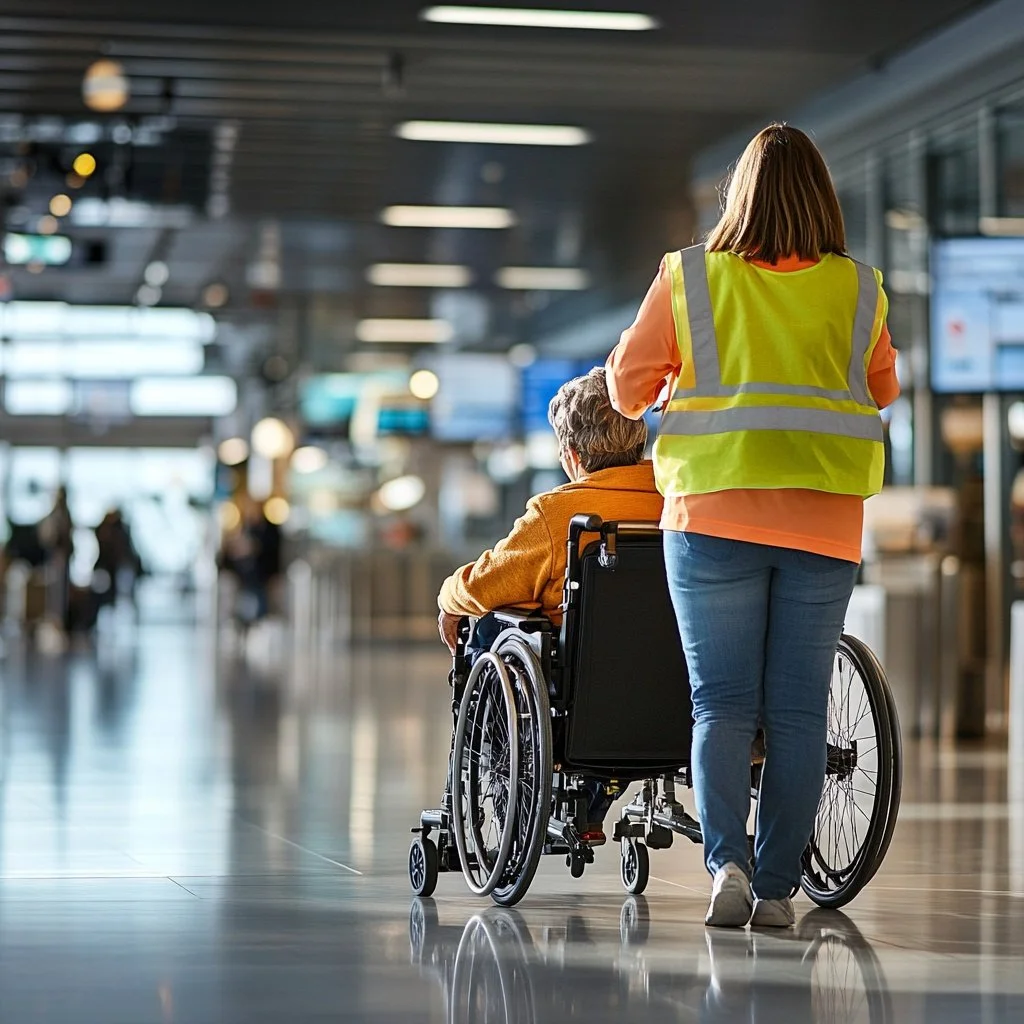Ensuring Accessible Travel – Your Leadership Is Needed
Leadership in ensuring accessible travel for an inclusive passenger experience.
The recent accessibility symposium shed light on the persistent challenges faced by travelers with disabilities in air travel. Despite technological advancements, many barriers remain. Addressing these challenges requires robust leadership from aviation executives and diversity, equity, and inclusion (DEI) leaders. Together, we can pave the way for a truly inclusive travel experience.
The State of Accessibility in Air Travel
In today’s interconnected world, accessible travel remains elusive for many. Air travel, in particular, poses unique challenges, from inaccessible boarding processes to limited onboard facilities. Despite regulatory frameworks like the Air Carrier Access Act (ACAA), gaps in implementation often result in frustrating experiences for passengers with disabilities.
The Role of Leadership in Breaking Barriers
Leaders in the aviation industry wield the power to create transformative change. By prioritizing accessibility, they can shape policies, influence culture, and drive innovation. Leadership is essential in fostering an environment where inclusivity becomes second nature rather than an afterthought.
Understanding Accessibility as a Core Value
For accessibility to thrive, it must be ingrained in an organization’s DNA. This requires:
Executive Commitment: Clear policies and practices that prioritize accessibility.
Training and Awareness: Equipping employees with the knowledge to assist passengers with diverse needs.
Cross-Functional Collaboration: DEI leaders and operational teams working together to ensure comprehensive solutions.
Overcoming Physical Barriers in Air Travel
Physical barriers remain one of the most visible challenges in air travel. These include:
Boarding Processes: Limited access to boarding bridges and cumbersome wheelchair assistance.
Onboard Accessibility: Inadequate restroom facilities and seating configurations that restrict mobility.
Airport Navigation: Insufficient signage, audio announcements, and tactile paths for passengers with visual or auditory impairments.
Leadership can address these by investing in universal design principles and adaptive technologies.
Enhancing the Passenger Experience Through Innovation
Innovation holds the key to creating an inclusive travel experience. Examples include:
Smart Assistive Technologies: Mobile apps that provide real-time navigation assistance.
Accessible Cabin Layouts: Wider aisles and adjustable seating.
Inclusive In-Flight Entertainment: Closed captioning, audio descriptions, and tactile controls.
The Importance of Collaboration
No single entity can tackle accessibility alone. Partnerships between airlines, airports, advocacy groups, and government agencies are vital. Collaborative efforts lead to:
Shared knowledge and resources.
Standardized accessibility practices.
A unified voice advocating for regulatory changes.
Leadership Strategies for Promoting Accessibility
To create systemic change, leaders must adopt specific strategies:
Data-Driven Decision Making: Use passenger feedback to identify pain points and prioritize improvements.
Employee Empowerment: Regular training to handle accessibility issues effectively.
Accountability Frameworks: Metrics and reporting systems to measure progress.
Integrating Accessibility into Corporate Goals
Accessibility should be a part of an organization’s broader goals. Key actions include:
Embedding accessibility metrics into annual performance reviews.
Allocating budgets specifically for accessibility projects.
Recognizing leaders who champion inclusivity.
Advocating for Policy Changes
Regulatory frameworks play a crucial role in ensuring accessibility. Leaders must:
Engage with policymakers to enhance existing regulations.
Support advocacy groups pushing for inclusive legislation.
Ensure compliance with international accessibility standards.
Success Stories in Accessible Travel
Several airlines have emerged as pioneers in accessibility. For instance, some carriers now offer onboard wheelchairs, Braille safety cards, and accessible booking platforms. These efforts demonstrate that systemic change is achievable with the right leadership.
Challenges in Implementing Accessibility Initiatives
While the benefits of accessibility are clear, implementation often faces hurdles:
Budget Constraints: Accessibility projects can be expensive.
Resistance to Change: Cultural inertia within organizations.
Technological Gaps: Lack of suitable technology to address complex needs.
The ROI of Accessible Travel
Investing in accessibility isn’t just the right thing to do—it makes good business sense. Accessible travel opens up opportunities to serve a broader customer base, build brand loyalty, and reduce legal risks.
A Call to Action for Aviation Leaders
The time for action is now. Aviation leaders must take bold steps to ensure accessible travel becomes a reality. By fostering a culture of inclusivity and innovation, they can lead the way toward a more equitable future.
FAQs
Why is accessible travel important?
Accessible travel ensures that everyone, regardless of ability, can enjoy the freedom to explore the world. It promotes equity, independence, and dignity.
What are the main barriers to accessibility in air travel?
Common barriers include inadequate boarding facilities, inaccessible onboard features, and limited airport navigation aids.
How can leadership drive change in accessibility?
Leadership drives change by setting clear policies, fostering collaboration, and investing in innovation and training.
What are some examples of accessible travel innovations?
Examples include smart navigation apps, inclusive cabin designs, and enhanced in-flight entertainment systems with accessibility features.
How does accessibility benefit airlines?
Accessibility improves customer satisfaction, expands market reach, and reduces the risk of non-compliance penalties.
What role do DEI leaders play in ensuring accessible travel?
DEI leaders bridge the gap between policy and practice by promoting awareness, advocating for resources, and driving cross-departmental collaboration.
Conclusion
Ensuring accessible travel is not just a moral imperative; it’s a leadership challenge that demands vision, commitment, and action. By breaking barriers and fostering inclusivity, aviation leaders can transform air travel into an experience that truly welcomes everyone. Together, we can create a future where accessible travel is the standard, not the exception.

